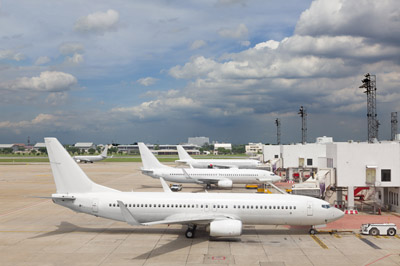 Spare parts supply represents an especially large part of aviation business. According to Oliver Wyman consultancy agency, the global aviation industry spends more than $5 billion annually to replenish and maintain an insurance policy against the inevitable failure of component parts alone. For airlines, this translates to a collective balance sheet item of $19 billion. At the same time, although the demand for spare parts is constant, recently a trend of airlines wanting smaller inventories has become apparent. However, is the industry ready for such a change?
Spare parts supply represents an especially large part of aviation business. According to Oliver Wyman consultancy agency, the global aviation industry spends more than $5 billion annually to replenish and maintain an insurance policy against the inevitable failure of component parts alone. For airlines, this translates to a collective balance sheet item of $19 billion. At the same time, although the demand for spare parts is constant, recently a trend of airlines wanting smaller inventories has become apparent. However, is the industry ready for such a change?
Although maintaining a spare parts stock has long been a routine part of any airline’s life, it seems the situation has been gradually changing for a while now. Under competitive pressure more and more airlines have actually been abandoning the strategy of holding huge and expensive parts stocks to support their operations.
In fact, according to the industry experts, the airlines have been reducing their stocks for about 10 years now, if not more. If such a pace remains, it is said that by 2020, the operators will abandon inventory stocking at all, thus switching solely to the offerings from third-party providers. Nevertheless, if this scenario in fact proves to be true, the industry has still a lot to do in order to improve the efficiency, transparency and reliability of such services.
“Most companies think of spare parts as regular inventory. But spare parts are a very different class of asset – insurance against costly downtime – and require a different set of tools and analysis to manage. Companies that rely on spares need to determine the best insurance coverage, figure out the right amount of spares, and ensure the parts are in the right place at the right price,” shares Zilvinas Sadauskas, the CEO of Locatory.com. “Needless to say, failure to understand this can result in the nightmarish phenomenon of carrying high levels of spare parts while, at the same time, experiencing costly delays and downtime of critical production equipment.”
According to the executive, this is exactly why many companies have begun hiring third party parts providers to provision spare parts on the airlines’ behalf. If managed properly, this may actually help improve access to spares while reducing the amount of capital tied up in inventory. For instance, Oliver Wyman states that by streamlining and eliminating redundant inventory management and logistics processes internal cycle times can be reduced by as much as 60%.
this may actually help improve access to spares while reducing the amount of capital tied up in inventory. For instance, Oliver Wyman states that by streamlining and eliminating redundant inventory management and logistics processes internal cycle times can be reduced by as much as 60%.
Naturally, as airlines downsize on inventory investment the competition for spare parts providers gets fiercer, with each company offering tailored services to help operators forecast what stock they may need, as well as ensuring that those parts are readily available. At the same time, however, the airline industry still has a lot to learn about improvements that are made possible for inventory management with proper forecasting and some relatively simple software changes.
“Appropriate application of IT tools enables to provide a better service level for parts and more reliability for maintenance operations. Nevertheless, if industry players are seeking to significantly cut the currently excessive supply chain-related costs, closer collaboration between OEMs and suppliers must be accompanied by the overall increased openness and trust. Therefore, the ultimate question is whether the industry is finally ready to apply the kind of focus,” says Zilvinas Sadauskas, the CEO of Locatory.com.





